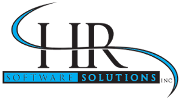For HR tech experts, it’s interesting to note what is and isn’t playing a role in the development of workforce management systems this year. In a recent interview for Human Resource Executive Online, Sierra-Cedar research and analytics Vice President Stacey Harris explained the way that HR processes have changed in 2015 alone, based on both the new technologies available and the important industry trends affecting them.
Of these, Harris noted that use of mobile HR systems has improved by more than 90 percent compared to last year, and that the steps are there for it to continue to develop. At the same time, Harris also notes the comparatively slower progression of HR analytics, saying that “embedded core HRMS” have been responsible for the majority of adoptions.
Whatever trends are specific to 2015, a transformed mindset could be needed to guide new adoption and implementation decisions. In an article for Workforce, Deloitte’s Lisa Disselkamp describes the new way companies need to think about their workforce management protocols for better success.
“Employers should recognize that workforce management is not a set of back-office activities,” she writes. “Workforce management is driving the business by intelligently designing and executing what people do based on a balance of what is good for all: the business, workers and customers. How we execute drives important outcomes for each of these parties: cost and income, workability and quality.” As she notes, the most visible aspect of workforce management is the ability to manage time.
The right HR software solution will meet all of a company’s targets and help them anticipate important new changes. Workforce management can be one area a business focuses on during their new system selection process.

